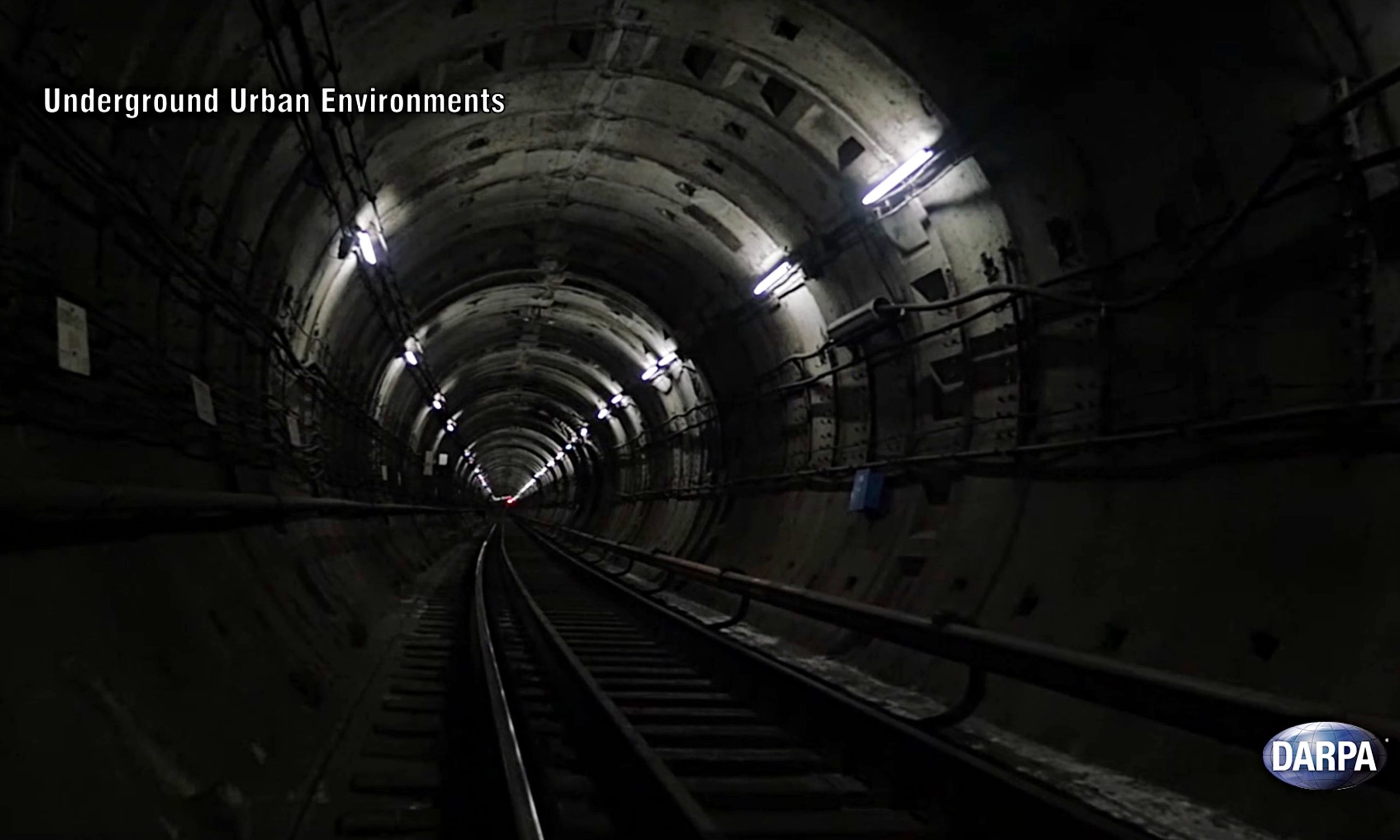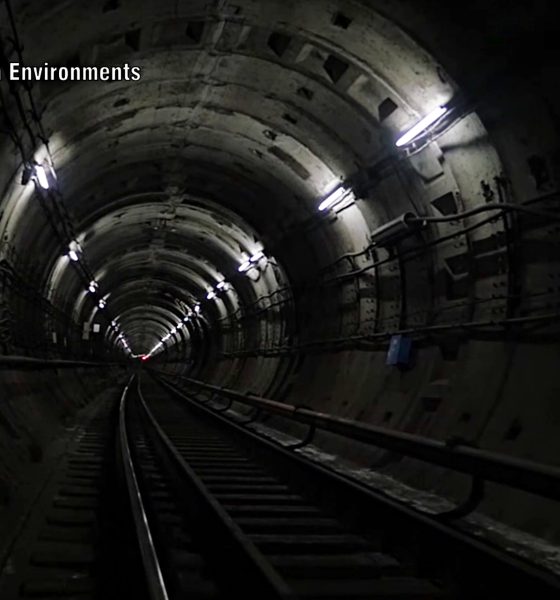

News
DARPA joins Musk’s Boring Co. initiative to advance tunneling technology
Elon Musk’s tunneling venture, The Boring Company, would not be alone in its underground ventures for very long. Just recently, DARPA launched a competition aimed at creating an efficient, cost-effective and safe way to travel underground. The contest, dubbed by the US Department of Defense branch as the SubT Challenge, is open to interested teams of participants from all over the world, and it has a pretty hefty prize waiting for its lucky winners.
As noted in a DARPA press release, the competition asks its participants to develop effective systems that can aid humans in navigating, mapping and exploring underground locations. Unlike Musk’s The Boring Company, which is primarily geared towards addressing “soul-destroying traffic” in densely populated areas, DARPA’s SubT Challenge is mostly focused on underground life-saving innovations.
Timothy Chung, the program manager for DARPA’s Tactical Technology Office (TTO), described one of the most pertinent reasons behind the agency’s initiative. According to Chung, DARPA’s upcoming underground system would provide a massive benefit during emergency situations.
“The DARPA Subterranean or ‘SubT’ Challenge aims to explore new approaches to rapidly map, navigate, and search underground environments. Teams from around the world will be invited to propose novel methods for tackling time-critical scenarios through unknown courses in mapping subsurface networks and unpredictable conditions, which are too hazardous for human first responders.”
The SubT Challenge will involve teams that would be competing side-by-side along two different research tracks. Each team would have the option to pursue the Systems track, which develops actual hardware that would be tested on a physical course, or the Virtual track, which requires teams to come up with software-based systems that would be tested on a simulated course.
Rival teams from both Systems and Virtual tracks will be competing in three preliminary Circuit events, each one addressing different underground environments, as noted in a Live Science report. The first event simulates man-made tunnel systems, the second mass transit and municipal infrastructure, and the third naturally-occurring cave networks.
As noted by DARPA, “One of the main limitations facing warfighters and emergency responders in subterranean environments is a lack of situational awareness; we often don’t know what lies beneath us. The DARPA Subterranean Challenge aims to provide previously unimaginable situational awareness capabilities for operations underground.”
The SubT Challenge Finals, which will be held in 2021, will require competing teams to put their creations to the test using various challenges from all three underground environments. The winning team for the Systems track will receive $2 million, while the team that wins the Virtual track will take home $750,000. Interested groups who would like to take a crack at DARPA’s SubT Challenge can submit their applications by January 18, 2018.
As DARPA starts its underground initiatives through the SubT Challenge, Elon Musk’s Boring Company continues to make significant progress with its operations. Early last month, Musk’s appropriately-named company published the first images of a proposed tunnel map for Los Angeles. The map included a Phase 1 tunnel that connects the SpaceX headquarters in Hawthorne with Culver City, as well as a proposed Phase 2 route that extends further into the greater LA region.
The Boring Company has seen a significant amount of support from many US cities as well, including Los Angeles, where Mayor Eric Garcetti welcomed the new underground initiative for the city’s transportation system. Furthermore, back in August, Hawthorne’s city council approved Musk’s tunneling project, with Mayor Alex Vargas expressing his full support for the underground initiative.

News
Tesla starts showing how FSD will change lives in Europe
Local officials tested the system on narrow country roads and were impressed by FSD’s smooth, human-like driving, with some calling the service a game-changer for everyday life in areas that are far from urban centers.

Tesla has launched Europe’s first public shuttle service using Full Self-Driving (Supervised) in the rural Eifelkreis Bitburg-Prüm region of Germany, demonstrating how the technology can restore independence and mobility for people who struggle with limited transport options.
Local officials tested the system on narrow country roads and were impressed by FSD’s smooth, human-like driving, with some calling the service a game-changer for everyday life in areas that are far from urban centers.
Officials see real impact on rural residents
Arzfeld Mayor Johannes Kuhl and District Administrator Andreas Kruppert personally tested the Tesla shuttle service. This allowed them to see just how well FSD navigated winding lanes and rural roads confidently. Kruppert said, “Autonomous driving sounds like science fiction to many, but we simply see here that it works totally well in rural regions too.” Kuhl, for his part, also noted that FSD “feels like a very experienced driver.”
The pilot complements the area’s “Citizen Bus” program, which provides on-demand rides for elderly residents who can no longer drive themselves. Tesla Europe shared a video of a demonstration of the service, highlighting how FSD gives people their freedom back, even in places where public transport is not as prevalent.
What the Ministry for Economic Affairs and Transport says
Rhineland-Palatinate’s Minister Daniela Schmitt supported the project, praising the collaboration that made this “first of its kind in Europe” possible. As per the ministry, the rural rollout for the service shows FSD’s potential beyond major cities, and it delivers tangible benefits like grocery runs, doctor visits, and social connections for isolated residents.
“Reliable and flexible mobility is especially vital in rural areas. With the launch of a shuttle service using self-driving vehicles (FSD supervised) by Tesla in the Eifelkreis Bitburg-Prüm, an innovative pilot project is now getting underway that complements local community bus services. It is the first project of its kind in Europe.
“The result is a real gain for rural mobility: greater accessibility, more flexibility and tangible benefits for everyday life. A strong signal for innovation, cooperation and future-oriented mobility beyond urban centers,” the ministry wrote in a LinkedIn post.
News
Tesla China quietly posts Robotaxi-related job listing
Tesla China is currently seeking a Low Voltage Electrical Engineer to work on circuit board design for the company’s autonomous vehicles.

Tesla has posted a new job listing in Shanghai explicitly tied to its Robotaxi program, fueling speculation that the company is preparing to launch its dedicated autonomous ride-hailing service in China.
As noted in the listing, Tesla China is currently seeking a Low Voltage Electrical Engineer to work on circuit board design for the company’s autonomous vehicles.
Robotaxi-specific role
The listing, which was shared on social media platform X by industry watcher @tslaming, suggested that Tesla China is looking to fill the role urgently. The job listing itself specifically mentions that the person hired for the role will be working on the Low Voltage Hardware team, which would design the circuit boards that would serve as the nervous system of the Robotaxi.
Key tasks for the role, as indicated in the job listing, include collaboration with PCB layout, firmware, mechanical, program management, and validation teams, among other responsibilities. The role is based in Shanghai.
China Robotaxi launch
China represents a massive potential market for robotaxis, with its dense urban centers and supportive policies in select cities. Tesla has limited permission to roll out FSD in the country, though despite this, its vehicles have been hailed as among the best in the market when it comes to autonomous features. So far, at least, it appears that China supports Tesla’s FSD and Robotaxi rollout.
This was hinted at in November, when Tesla brought the Cybercab to the 8th China International Import Expo (CIIE) in Shanghai, marking the first time that the autonomous two-seater was brought to the Asia-Pacific region. The vehicle, despite not having a release date in China, received a significant amount of interest among the event’s attendees.
Elon Musk
Elon Musk and Tesla AI Director share insights after empty driver seat Robotaxi rides
The executives’ unoccupied tests hint at the rapid progress of Tesla’s unsupervised Robotaxi efforts.

Tesla CEO Elon Musk and AI Director Ashok Elluswamy celebrated Christmas Eve by sharing personal experiences with Robotaxi vehicles that had no safety monitor or occupant in the driver’s seat. Musk described the system’s “perfect driving” around Austin, while Elluswamy posted video from the back seat, calling it “an amazing experience.”
The executives’ unoccupied tests hint at the rapid progress of Tesla’s unsupervised Robotaxi efforts.
Elon and Ashok’s firsthand Robotaxi insights
Prior to Musk and the Tesla AI Director’s posts, sightings of unmanned Teslas navigating public roads were widely shared on social media. One such vehicle was spotted in Austin, Texas, which Elon Musk acknowleged by stating that “Testing is underway with no occupants in the car.”
Based on his Christmas Eve post, Musk seemed to have tested an unmanned Tesla himself. “A Tesla with no safety monitor in the car and me sitting in the passenger seat took me all around Austin on Sunday with perfect driving,” Musk wrote in his post.
Elluswamy responded with a 2-minute video showing himself in the rear of an unmanned Tesla. The video featured the vehicle’s empty front seats, as well as its smooth handling through real-world traffic. He captioned his video with the words, “It’s an amazing experience!”
Towards Unsupervised operations
During an xAI Hackathon earlier this month, Elon Musk mentioned that Tesla owed be removing Safety Monitors from its Robotaxis in Austin in just three weeks. “Unsupervised is pretty much solved at this point. So there will be Tesla Robotaxis operating in Austin with no one in them. Not even anyone in the passenger seat in about three weeks,” he said. Musk echoed similar estimates at the 2025 Annual Shareholder Meeting and the Q3 2025 earnings call.
Considering the insights that were posted Musk and Elluswamy, it does appear that Tesla is working hard towards operating its Robotaxis with no safety monitors. This is quite impressive considering that the service was launched just earlier this year.








